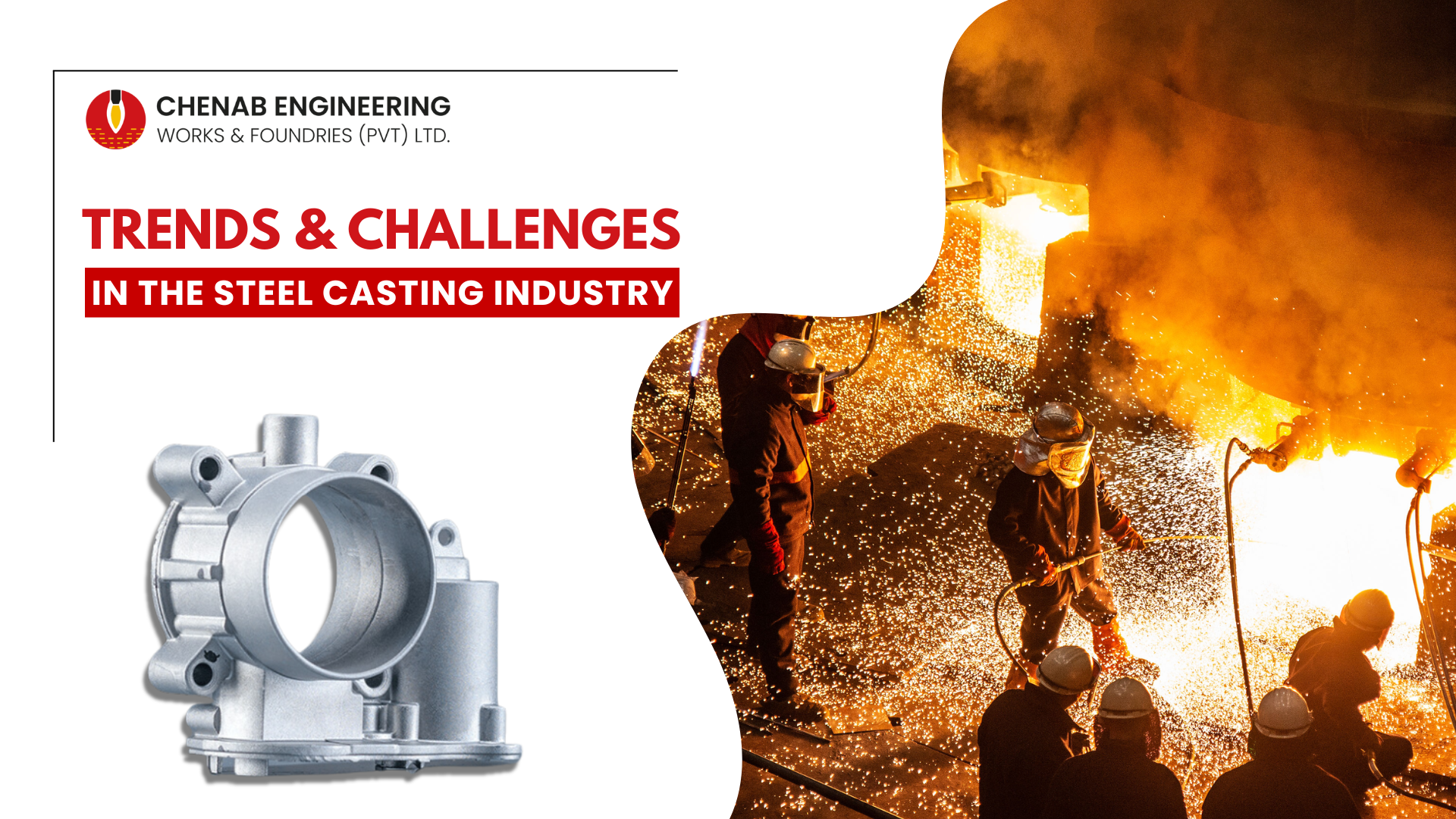How is the steel casting industry evolving in the face of modern demands and technological advancements?
To stay competitive in this fast-paced industry, it is crucial to be knowledgeable about the significant trends and issues affecting the steel casting sector as it responds to the rapidly changing global landscape.
The steel casting industry plays a crucial role in modern manufacturing, providing essential parts to various sectors like automotive, aerospace, construction, and energy. Despite its long history, the business is adapting to new technology, environmental concerns, and evolving consumer needs. The article analyzes current challenges and advancements in the steel casting industry, focusing on the adaptation of companies like Chenab Engineering Works.
Trends in the Iron & Steel Casting Industry
Rising trends and technologies that are expected to reshape the industry have an impact on the future potential of the iron and steel casting market. The following are some possible future elements of the market:
- Advanced Materials and Alloys: It is expected that the qualities of iron and steel castings will improve with the introduction of new materials and alloys. These materials may provide increased thermal stability, strength, and corrosion resistance. Particularly in the automotive and aerospace industries, the combination of lightweight materials like aluminum and magnesium alloys with iron and steel castings can result in components that perform more effectively and use less energy.
- Digitalization and Industry 4.0: The manufacturing landscape, particularly the iron and steel casting sector, is changing due to the implementation of digital technology and Industry 4.0 principles. Automation, data analytics, and Internet of Things (IoT) sensors are being used to optimize production processes, track quality, and increase efficiency. Predictive maintenance combined with real-time monitoring can cut down on downtime and boost overall casting operations efficiency.
- Additive Manufacturing and 3D Printing: The casting of iron and steel might go through a transformation due to additive manufacturing and 3D printing. Casting applications may be expanded by the use of additive manufacturing processes, which can yield complicated shapes, elaborate designs, and optimal material utilization. This technique can make it possible to produce cast components on demand, customize them, and prototype them quickly.
- Integration with Simulation and Modeling Tools: Advanced modeling and simulation methods can help make casting behavior predictions, such as shrinkage, defect formation, and solidification patterns, more accurate. By optimizing casting designs, fewer physical prototypes are required, and the quality of the final product is improved, virtual prototyping and simulation can help. Design iterations may be completed more quickly and effectively with integration with computer-aided engineering (CAE) tools.
- Customization and Mass Customization: The demand of consumers for customized products is growing. By utilizing digital technologies, the sector may provide cost-effective customization alternatives. Automation, flexible manufacturing methods, and the integration of digital design tools can enable mass customization, or the large-scale production of personalized items.
Challenges Facing the Iron & Steel Casting Industry
Numerous obstacles could hinder the iron and steel casting market’s expansion and profitability. These Challenges include:
- Environmental Regulations: Stringent environmental laws about energy usage, waste management, and emissions apply to the iron and steel casting industry. Sticking to these standards might require substantial financial outlays for sustainable practices and pollution control technologies. For businesses in the sector, sustaining competitiveness while adhering to these environmental regulations presents a problem.
- Volatility in Raw Material Prices: The cost and availability of raw materials, such as iron ore, scrap metal, and alloying elements, can significantly impact the profitability of iron and steel casting manufacturers. Price fluctuations for raw materials can raise production costs and have an impact on profit margins. To lessen the effects of fluctuations in raw material prices, businesses must efficiently manage their supply chains and look into alternate sourcing solutions.
- Intense Competition: There are many local and international competitors fighting for market share in this highly competitive industry. Profit margins may be under pressure from price competition, particularly from low-cost companies in emerging economies. To maintain competitiveness in the market, differentiation through product quality, technological innovations, and customer service becomes essential.
- Skills and Workforce Availability: Skilled labor and technical knowledge of various casting processes are required in the iron and steel casting sector. However, a talent gap results from a lack of skilled labor in some areas. Companies face challenges in recruiting and retaining qualified personnel, impacting production efficiency and innovation capabilities. Investing in training and talent development programs is essential to address this challenge.
- Technological Advancements and Automation: Technological advancements bring both growth opportunities and challenges for traditional iron and steel casting manufacturers. Automation and additive manufacturing are emerging technologies that demand investment and technical knowledge. Keeping up with these developments can be both challenging and costly when it comes to upgrading current systems and procedures.
- Energy Efficiency and Sustainability: Energy expenditures make up a sizable amount of production costs in the energy-intensive iron and steel casting sector. Reaching energy efficiency goals and lowering carbon emissions are significant obstacles for companies operating in the market. These issues can be resolved by using energy-efficient technologies, fine-tuning process parameters, and looking into renewable energy sources.
Conclusion:
The steel casting sector is undergoing a transition due to market factors, sustainability objectives, and technology improvements. These trends present opportunities for growth and creativity, but they also pose challenges that require careful adaptation. Chenab Engineering Works and other businesses have the potential to excel in this fast-paced market by integrating sustainability, technology, and a skilled workforce to deliver superior casting solutions.





